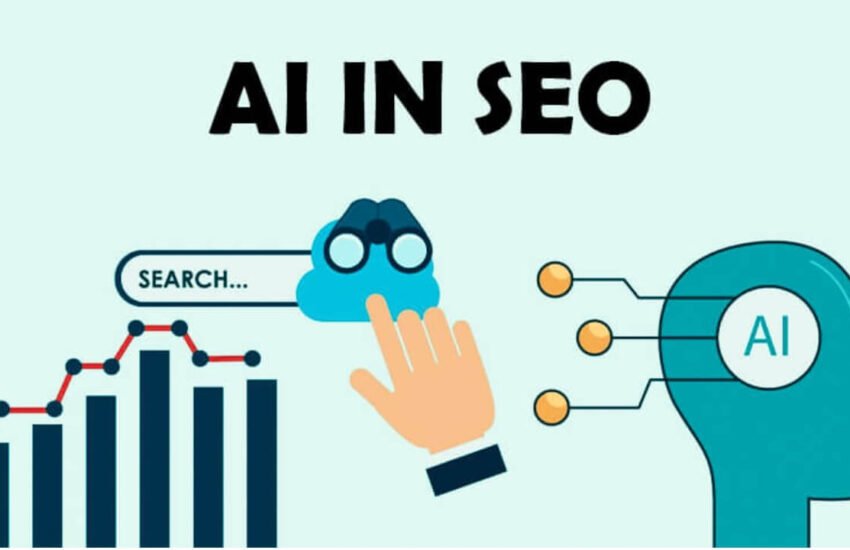Over the past few months, however, something about the state of SEO conversions has been making businesses and marketers uneasy- it seems to be slipping. By March 2025 in the U.S (and May elsewhere), organic conversions on many websites had dropped, spawning a flood of inquiries as to the explanation of the decline. Though the decline of the traffic can be easily attributed to Google AI Overviews, purchase intent cannot be lost within one day.
In case stable conversions are good news to you, then good luck! Otherwise, your cause of these reductions can be more complicated than the decrease of organic traffic. The blog will discuss the possible five reasons as to why AI is affecting the conversions of SEO, the way to detect these changing trends, and what can be done to undo the results in future.
1. The absence of Top-of-the-Funnel (TOFU) Traffic
Years of SEO efforts have been on top-of-the-funnel (TOFU) content, posts and questions with the structure of what and how: What is it? How does it work? This kind of content does not directly influence revenues, but plays a key role in attracting the attention of users. Revv is however reducing the TOFU traffic to a great extent through AI Overviews and coupled with additional search features, the same ripple effect is occurring to the conversions.
I discussed and abbreviated Demand Activation in my AI Halftime Report and imply when something appears early in someone early in a user lifecycle, it will have a downstream effect on resultant purchases. More simply, in the situation of your brand seen early in the funnel, it can impact the eventual conversion even though the click itself does not appear in its analytics.
Signals to Note:
TOFU traffic loss vs. MOFU/BOFU: This can be measured by the year on year (YOY) clicks in Google Search Console of the TOFU compared to the middle (MOFU) or bottom (BOFU) funnel traffic.
Branded search volume: I would use Google Trends as a tool (or premium options like Ahrefs) to monitor branded search volume and relate it to any loss of TOFU traffic.
Assisted conversions decline: Look in GA4 to view the YoY assisted conversions in organic search to understand whether TOFU content is helping less in downstream revenue.
2. Plateau Shifts: Platform Movements into Non-Google Search
The other factor that has been reducing the SEO conversions is the change of search behavior where people moved away traditional Google Search. It has been further found that platforms such as TikTok, YouTube, Reddit, and even ChatGPT are becoming increasingly popular platforms to search in, especially among younger crowds. Such diversification implies that your potential customers can discover your products and services in other locations and familiar “Google Search” funnel might no longer be the main tool of organic traffic generation.
This platform and search behavior change is further augmented through the use of AI-enabled search engines such as ChatGPT and other large language models (LLMs) that can instantly produce answers, and in some cases eliminating a search click altogether.
Signals to Note:
Non-Google referral traffic: If you use a non-Google platform such as TikTok, YouTube or Reddit, you can track the referral traffic to your site in GA4, and observe whether these changes are associated with decreases in organic traffic.
Share of search across platform: Measure the search behavior across platforms by using such tools as SimilarWeb or StatCounter to calculate the relative changes in search behavior by your traffic.
Self-reported: It could be worth carrying out a survey of your customer base to learn which platform they entered your brand and whether their experience began in Google Search or on yet another platform.
3. Embarking New Directions: Organic to Paid Search:
Perhaps what is happening is channel shift- where conversions which otherwise would have been attributed to organic search are going to paid search due to the impact of SEO. As AI Overviews and zero-click results have grown in prominence, that means that users are being served the appropriate amount of information so that they do not have to click into an organic result to get the information they need. Once they are full of intent to search deeper or to purchase, the chances are high that they will click the first-seen paid advertisement.
We have been able to observe this change through the Google Q1 2025 earnings report, which indicates stable growth of paid clicks in spite of a decrease in organic traffic. At the time when AI answers information requests, the paid search as the offer to the users remains relevant because people can still want to discuss the products and services.
Signals to Note:
Share of organic vs. paid search traffic: Use Google Analytics 4 to compare the sessions that come via organic search and paid search YOY to assess whether the balance is tipping towards paid search.
Paid search impression and click increase: trace Google Ads improvements in impression and clicks of your campaigns to determine whether they may have been growing in paid search or not.
CPC and CPA patterns: This is to track the trend of costs-per-click (CPC) and costs-per-acquisition (CPA) of paid campaigns to determine whether the trend towards paid is increasing costs on advertisements.
4. Attribution Shifts: That is the problem with measuring the impact of organic
When it comes to SEO, attribution is a problematic issue that since the introduction of the AI-powered searching, it only makes it much more complex. According to the conventional attribution approach, the customer journey used to be linear: a search, followed by a click, a landing and a conversion. However, as AI Overviews are on the rise, many users skip the click and go directly to your site or app one they deal with AI.
This shift in the customer journey is complicating analytics tools to attribute conversion to organic search as they may be recorded as direct instead of having passed through an organic search result.
Signals to Note:
Direct conversions are increased and organic conversions are decreased: YOY direct channel conversions in GA4 and organic conversions, compare to check the inverted trend.
The branded search is stable or growing: To track it, use tools such as Google Trends to observe the development of branded search traffic to see whether users skip organic SERPs, and still, can search under the brand.
Multi-touch attribution exhibits search influence: In cases of a multi-step conversion path, use the data-driven attribution model in GA4 to determine whether search remains an important step in the conversion path.
5. The Role of Consumer Behavior Economic Impact:
Lastly, there is always the issue of the general state of the economy that might be contributing a lot to the down dip in SEO conversions. Things like the increasing inflation, sensitivity to prices, and general tightening of belts in consumer spending can have a direct effect on conversion rates. A study conducted by Adobe and Salesforce revealed that consumers are getting low on their spending, particularly on items which they do not need. Consequently, the external pressure positions sell expressing hardships in converting traffic, despite the focus on the correct traffic.
Signals to Note:
Trend of organic conversion rate against others channels: This compares monthly conversion rates (organic search) to other channels (such as paid search and direct traffic) and gives an idea of whether there is a trend to economic pressure across channels.
Economic indicator correlation: Monitor relationships between organic conversion rates and important economic indicators such as inflation or the Consumer Confidence Index.
Promotion elasticity: Measure how the conversion rate would change during promotion, relative to the base to gauge whether the discounts are increasing conversion, particularly within organic search.
Wrap up: The New Search Engine Optimization Realm
When your 2025 SEO conversions are down, there is probably more going on than pure loss of traffic. AI is transforming the search environment, the factors at work include: loss of TOFU traffic, platform migrations, attribution leakage as well as economic forces: and learning about them will enable you to establish your footing on this new environment.
In order to succeed in this changing digital landscape, it is important to monitor the correct signals and check the effects of these changes so that you can adapt your strategies to suit this new condition. The era of AI powered search is already upon us, and knowing how it will be affecting the process of SEO conversions will help you stay at the forefront of its use.
Optimizing your search strategy pro-actively to allow AI usage, keep up with changes in attribution models, and react to other changes in the market, so you continue to gain valuable SEO conversions despite the new direction,



